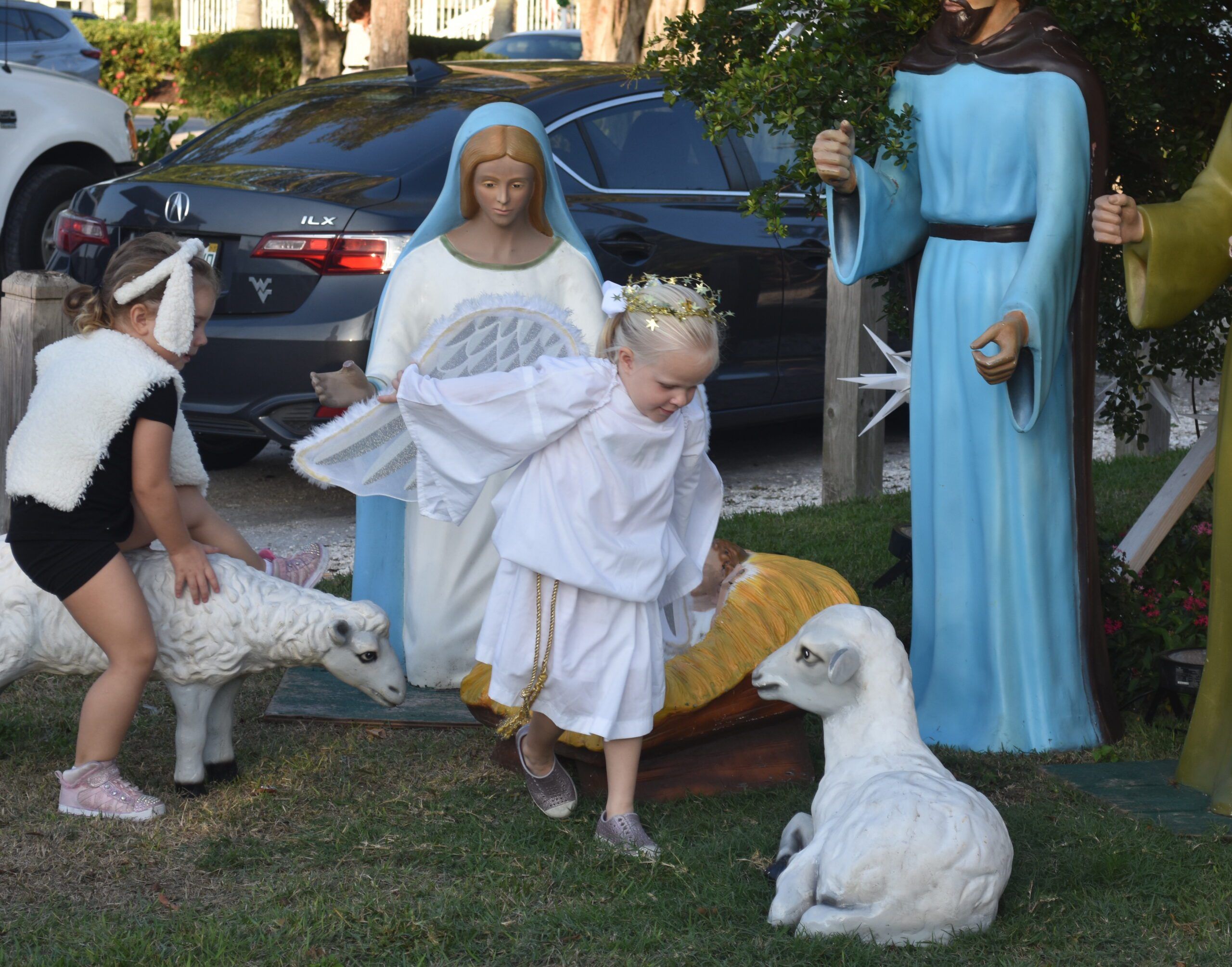A margarita cup transformed by a simple story

The dedication of the new island Christmas tree gave the island a moment of cultural clarity last Sunday night. It was a perfect evening – the cookies, the weather, the breeze, the sunset.
The crowd that gathered was at minimum 500, using the Jacobs Method: Add up the people in a section and then count how many sections you see. While 500 was a rough count, anything around that number is impressive for a town with an estimated 1,700 population and 1,400 post boxes.
There were so many people that the crowd spilled into the street. While it blocked the regulars’ view of the golf carts dutifully lined up by Hudson’s, one cannot fail to appreciate that Boca Grande is the one place in the world that can create a mosh pit to hear clergy speak and listen to Julia Pierce singing O Holy Night.
Yes, the stars were brightly shining Sunday night, but let’s be clear about it. This was a countercultural moment. This sort of evening may have been commonplace a half-century ago in many towns, but it is not the way the rest of the U.S. operates, as Christmas gets ever gaudier and more secular. There are fewer and fewer town squares where “Away in a Manger” is the theme song. They do not dare. But we do.
Here, we had the women of the island distributing homemade cookies and putting costumes on children, daring to reassert themselves in traditional roles.
Here, we had island children dressing up as sheep and angels and talking to a baby Jesus, hauled out from the storage unit each year.
Here, we had four clergy, each speaking from the heart about a story from 2,000 years ago.
The message was not about general goodness, or some sort of vague happiness or charity. The message of the evening was the central core of the Christian tradition.
The passage read by the Rev. Daphne Johnson of Lighthouse United Methodist on the birth of Jesus came from the Gospel of Luke. It is likely the most famous passage in the Bible because of its use in “A Charlie Brown Christmas.”
The reading comes at the end of the program, as Linus helps Charlie Brown and the community get past their frustration with the lame Christmas tree, and learn the “true meaning.” Linus even drops his blanket for a minute. We all know the line: “Sure, Charlie Brown, I can tell you what Christmas is all about.”
Linus then starts with Luke 2:8, speaking in the old school King James version:
“And there were in the same country shepherds…”
Today, we pretend that the cultural battles are ours, that we are the last generation to insist that it is okay to have a Gospel message in the public square. But this was also the battle on Dec. 9, 1965, when CBS took a risk and aired cartoonist Charles Schultz’s inaugural Christmas special.
At the time Schultz, or “Sparky”, as he was nicknamed, was teaching Sunday school at Sebastopol Methodist Church in Sebastapol, Calif. Here was this popular cartoonist, working on a network special with Coca-Cola and the ad agency McKann Erickson, and he was unafraid to tell the story from church. As producer Bill Mendelson said:
“He looked at me very coldly and said, ‘Bill, if we don’t do it, who will? We can do it.’ He was right. That’s been the most commented-on little sequences of that show – Linus telling the true meaning of Christmas.”
Critics have speculated about how the Christian message could have been inserted so deftly into a cartoon, without causing offense.
The best explanation we have heard is that its use was not done to proselytize, but instead to explain how a particular people saw their seminal event. Whether or not the audience believed the story, the story’s existence is a fact that created the moment we are in.
There was, however, something wistful and fragile about our island moment. This sort of event is no longer a part of the public Christmas season in most other towns. They do not have this. In some places, there is not even peace enough to have a normal lighting.
The noble moment of our town last Sunday was that the children were put front and center, showing what the future of this town is all about.
Of all the elements of the pageant, one of the more miraculous was the gift carried by one of the wise men. Look close, and you could see how the urn carried was originally a giant plastic margarita cup with a Christmas ball ornament inside. There was an angel halo glue-gunned onto the rim.
Such imagination! The margarita cup, transformed! What can faith in the future do? It can turn old Mardi Gras beads into royal gifts. And it can turn a plastic bar glass and a story into a beloved island tradition.
Garland Pollard is the editor of the Boca Beacon. Email your letters to gpollard@bocabeacon.com.









